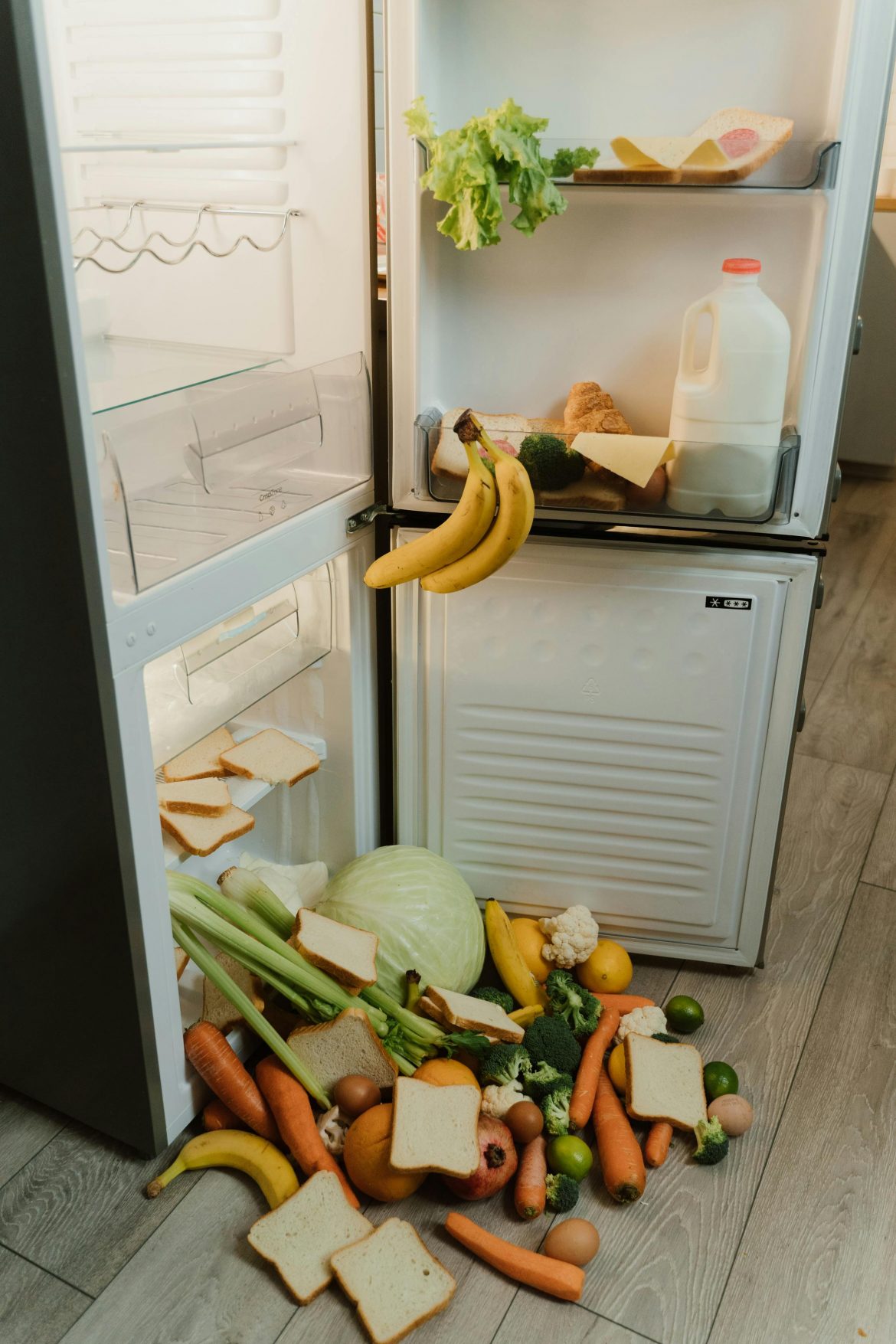The refrigerator is one of the hardest-working appliances in the kitchen, preserving food and drink by keeping cool 24/7. You might think you’re using it optimally (after all, how hard can it be, right?), but small mistakes in how you pack, clean, and use it could be shortening the life of your groceries (even your health).
Here are the most common fridge slip-ups and how to fix them.
You’re not making the most of your fridge
We’ve all been there: you’ve just come home from a great grocery shopping trip, only to find that you’re running out of storage space in your fridge. Before you put it down to your fridge being too small, or not having enough drawer space, it may be time to take a look at how you’ve been using it.
1. Overstuffing your fridge
Overfilling your fridge can lead to improper air flow and uneven cooling. Foods that aren’t kept at the right temperatures will expire much sooner than usual, leaving you with higher rates of food waste (which is much the same as throwing money down the drain).
Similarly, when you underfill the fridge, it will also struggle to maintain consistent temperatures. Foods will be cooled unevenly, and when the fridge door opens, there is a huge loss of cool air (maintaining the cycle of uneven temperatures).
How to fix this:
- Leave space between items for proper air flow
- Don’t block the air vents
- Try to keep your fridge at least three-quarters full
- Use bottles of water to help maintain the temperature of empty fridges
2. Placing hot food or leftovers directly into the fridge
It’s convenient to place food or leftovers into Tupperware and straight into the fridge, instead of waiting a couple of hours for it to cool down first. However convenient, the disruption in temperature control caused is greater. Not only will your fridge be working harder (aka using more electricity and costing you more), but the hot air and hot foods may cause certain bacteria to spread, contaminating other sources of food.
How to fix this:
- Leave prepared foods or leftovers to cool to room temperature before placing them in the fridge
- Don’t leave them out for longer than 4 hours (as this can create more contamination issues in the long run)
- Use baking trays and spread foods out in even layers to cool them quickly
3. Storing food in the wrong place
Organising your fridge isn’t just the latest TikTok trend, but the most efficient way to stock it. Your fridge was made with zones designated for specific food types. A well-organised fridge keeps your foodstuffs fresher for longer and helps make dinner prep easier.
How to fix this:
- Top shelf: Foods that don’t need cooking, like pre-cooked meats and leftovers.
- Middle shelf: All dairy products, from butter to cheese and milk
- Bottom shelf: Raw meats and seafood (prevents dripping or leakages)
- Drawer: Veggies, fruits, and herbs
- Inner door: The warmest part of the fridge. Store well-preserved foods here, like jams and pickles
4. Not keeping track of expiration dates and leftovers
I’m sure many of us can agree that a few foods and leftovers have been forgotten or pushed to the back of the fridge for “another day”. Expired foods and forgotten leftovers can grow mould and spread harmful bacteria to fresh foods, not to mention the foul-smelling odours produced.
How to fix this:
- Before grocery shopping, check what you still have stocked in your fridge
- FIFO: Rotate current food stock with new stock. Place new foods towards the back of the fridge, bringing current stock forward to use first
- Set aside time once a week (at least) to check expiration dates of foods, getting rid of any that have expired
- Get into the habit of labelling leftovers to keep track of their expiration dates
5. Not cleaning often enough
Every fridge is prone to crumbs, spills and leaks. When these go unnoticed, they are at risk of going off, growing mould, harbouring harmful bacteria, producing foul smells, and, worst of all, contaminating fresh foods.
How to fix this:
- Spot clean once you notice any spills, leaks or crumbs
- Wipe down the shelves, walls, and drawers at least once a week
- Deep clean the fridge monthly
- Check for any air vents or drain blockages (which may be causing foul odours or contamination)
6. Setting the wrong temperature
The ideal (and food safe) temperature for fridges is 3º to 5ºC. Anything warmer will encourage bacterial growth and contamination, and anything colder will freeze fresh produce (and shoot up your electricity bill).
How to fix this:
- Use a fridge thermometer if you’re unsure
- With every monthly clean-up, check the temperature range and adjust if necessary
7. Keeping food uncovered
Improperly stored food can cause your fridge to smell and spread bacteria. While it might be convenient to store opened foods as is, it may be harmful to your health.
How to fix this:
- Store fresh foods in airtight containers (remember to label them)
- Cling-wrap foods that might be a little tricky to fit into air-tight containers, like veggies and fruits
Treat your fridge like the superhero it is. A few small tweaks to your fridge habits can go a long way in keeping your food fresher for longer, saving you time and money, not to mention reducing food waste. Think of it as giving your kitchen superhero a little TLC and be thanked with crisp lettuce, cold milk, and meals that stay as delicious as the day you cooked them!

